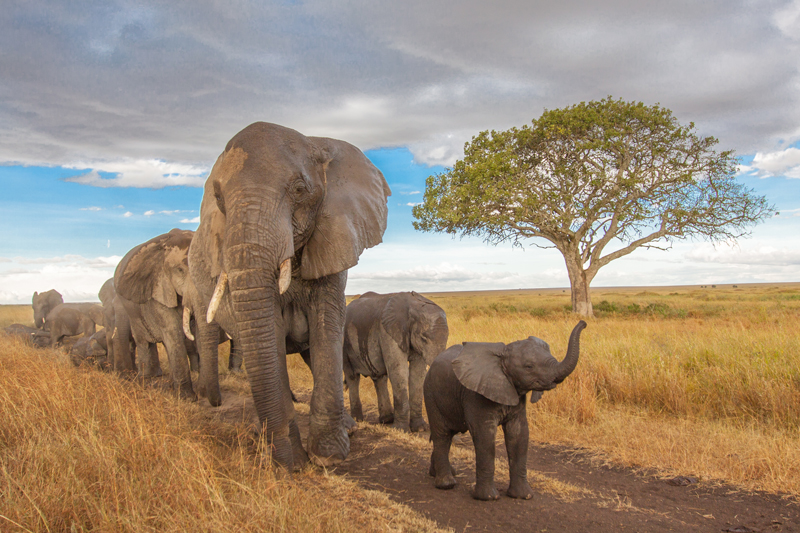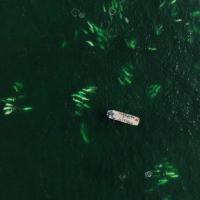The Holbrook Explorer

Photo Tips From Our Travel Community
Photo Tips From Our Travel Community
Throughout the years, we've gathered compelling photos from our community of travelers to share with you in our calendar, blog, and on social media. Often, these images capture moments that tell a story and transport us to another place.
In sharing the stories behind the photos, many of the photographers revealed techniques, tips, or insights into how they captured the image. Here are some of the lessons we’ve gleaned from past contributors.
Equipment
Research your destination beforehand and ask fellow photographers about their recommendations to ensure you pack the right equipment. For example, long telephoto lenses are often unnecessary in the Galápagos, where wildlife can be viewed up-close. In the low-light conditions of a rainforest, you might wide-aperture lenses and a tripod to steady the shot.

“I was participating in the Cuba’s Protected Natural Landscape Photo Contest, which brought us to the Topes de Collantes nature reserve. To shoot the minnows, I attached an underwater WiFi-controlled camera to a selfie stick, which was attached to a tripod.” —Steven Grunfeld, July 2017, Cuba

“We had spent the day game driving across Serengeti National Park. Our driver spotted a group of elephants, and we parked along their path... The elephants soon surrounded our trucks, coming within a foot or so; this photo was taken with a wide angle lens, with the mother about 18” from us.” —Eric Simon, September 2015, Tanzania
Lighting
Speaking of lighting, remember that morning and late afternoon provide dramatic light for your subjects. Also be aware of your subject’s background and how lighting can affect exposure.

“You really can’t get up too early for wildlife photography. That golden hour, when buttery light bathes the veld and turns the grass to diamonds, is not to be missed. I was enchanted by this female waterbuck, her long hair backlit by the rising sun, and I composed as I shot, placing her off to the right so her sightline ran across the composition.” — Julie Zickefoose, February 2016, South Africa

“This lovely Lesser Violetear was perched near the main building at La Savegre Lodge in the central highlands of Costa Rica. It was in perfect light, but the background – windows of a building – was in the shade, a combination that highlights the sparkling green and violet feathers of the Violetear. This was one of those lucky situations that gets photographers and birders up in the morning!" — Dixie Sommers, January 2017, Costa Rica

“I took this photo in the early evening as a tour guide drove by, pointing out the nearby Bacardi Building. As dusk approached my camera didn’t have sufficient light to use a fast shutter speed to freeze motion so I decided to try panning with the camera, following the motion of the cars with a slow shutter speed. This technique provided more light for the exposure and produced a slightly blurred background. Problem solved!” — David Hoitt, February 2017, Cuba
Composition
As you frame your photo, don’t just look at your subject, but also be aware of how items in the background or foreground could interfere with your shot. Think also about scale: do you want a wide shot that evokes an expansive mood, or do you prefer to focus on details for a more intimate feel?

“We stood on the edge of a Cape fur seal colony on Namibia’s rugged Atlantic coast. With 180,000 seals it seemed like an easy task to go out there and make great photographs. However, the challenge was to find a scene-within-a-scene—a graphic composition or an action-filled moment that would turn into a powerful photographic image. Hidden in this massive gathering of animals were scenes of conflict, humor, and in this picture, protection and love. Four seal pups nestled against a mother with her flipper snuggling them tells a powerful story.” — Todd Gustafson, December 2017, Namibia

“Standing 1,000 feet above Machu Picchu, I felt awe viewing the expanse of the ruins. This photo was taken after my return from the hike [up Huayna Picchu], while I was resting in the sanctuary of Machu Picchu. I snapped this shot in an attempt to scale down my experience of the ruins, focusing on the details of the buildings in juxtaposition with the bird’s-eye view I had just witnessed.” — Paloma Bone, February 2018, Peru

“Our STEM (Science, Technology, Engineering, and Mathematics) Education Expedition marveled at these spectacular hexagonal basalt columns along the black sand beach in Reynisfjara, Iceland… I kept the person in the photo for perspective as the scale of these geometric igneous columns was so magnificent.” — Page Keeley, December 2018, Iceland

“I was happy to finally capture this shot of the Parson’s chameleon as it moved down the branch without any interfering twigs and leaves to hide its magnificent head.” — Cindy Cone, May 2017, Madagascar
Perseverance
Lastly, getting the perfect shot is sometimes less about technical capability and more about patience—or sheer luck. Be on the lookout at all times, even so-called “down time,” and be prepared to grab your camera and start shooting when the moment presents itself.

“Our entire group was eating dinner when we spotted the swarming action occurring on this spectacular, 20-foot-high century plant on the grounds of our hotel in Paracas, Peru. For nearly an hour, we got “spaghetti arms” while our cameras and flashes got heavier as we held them overhead, taking multiple shots of these creatures of the night diving in and out of the beautifully structured blooms to get their fill... I was pleased to get this photo featuring four of the bats in one frame.” — Tracey Robertson, October 2019, Peru

“It was on the beach of Cerro Brujo, San Cristobal Island, that the Blue-footed Booby really gained my respect. When diving for fish, they are transformed into streamlined diving machines, plunging from 80-100 feet above at speeds up to 60 miles per hour. I changed my mind about swimming at the beach and concentrated all of my time on capturing their high-speed acrobatics with my camera. I took many photos of splashes and near-misses, but after careful observation I was eventually able to anticipate and track the dives with a fast shutter speed. This image was one of my favorites.” — Cindy Cone, January 2019, Galápagos
Originally published 5/17/2019; edited 8/13/2020




